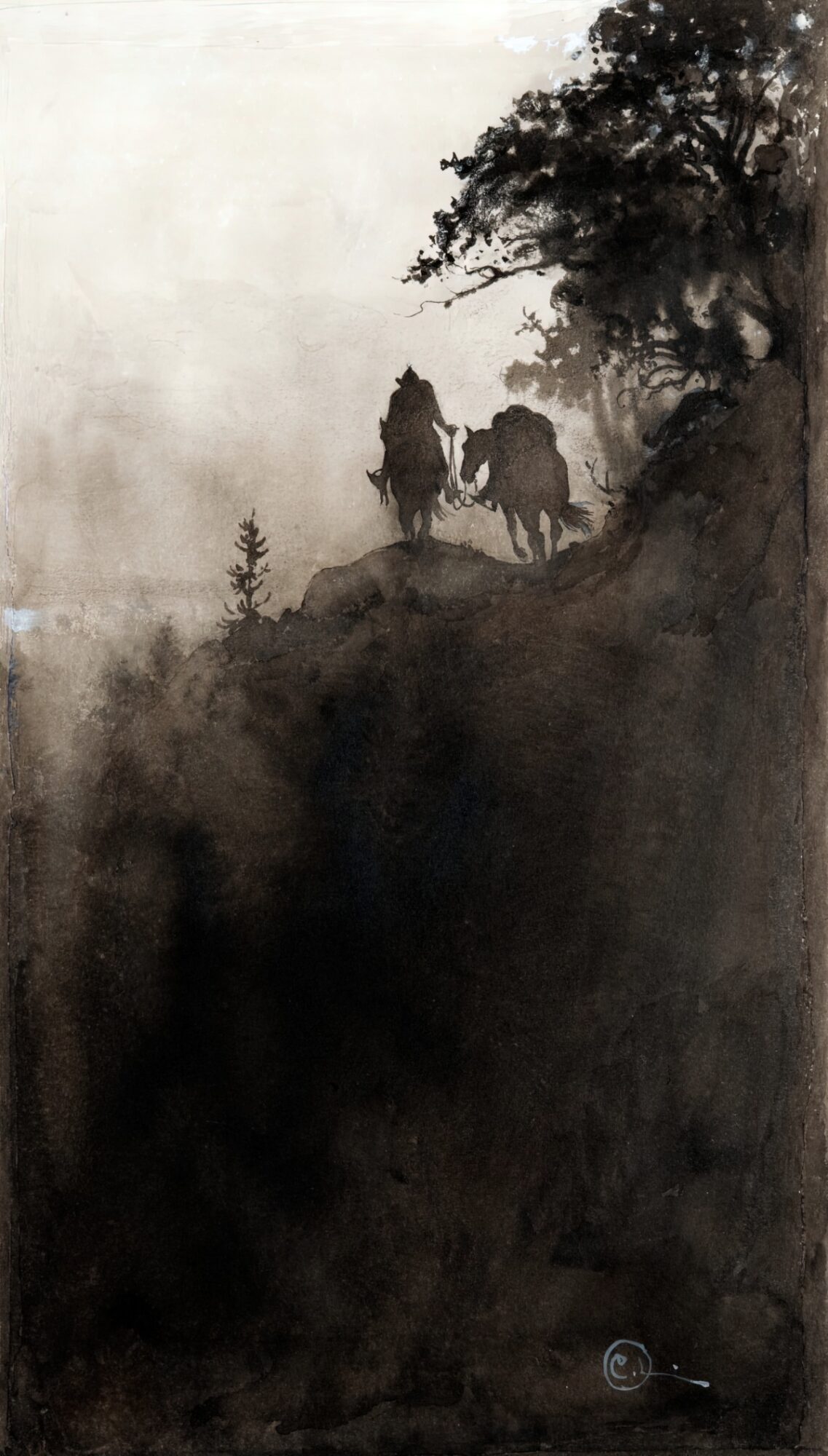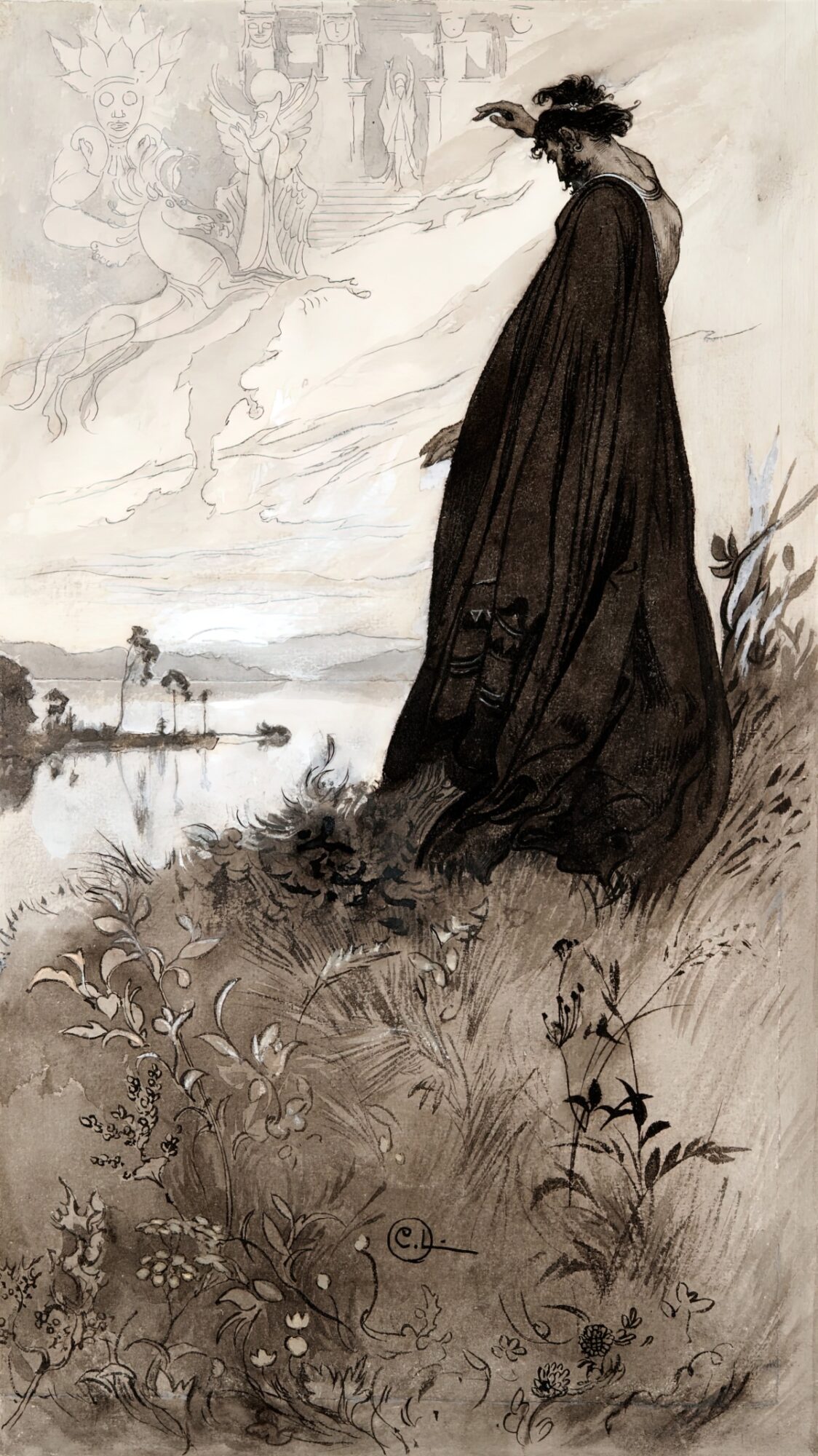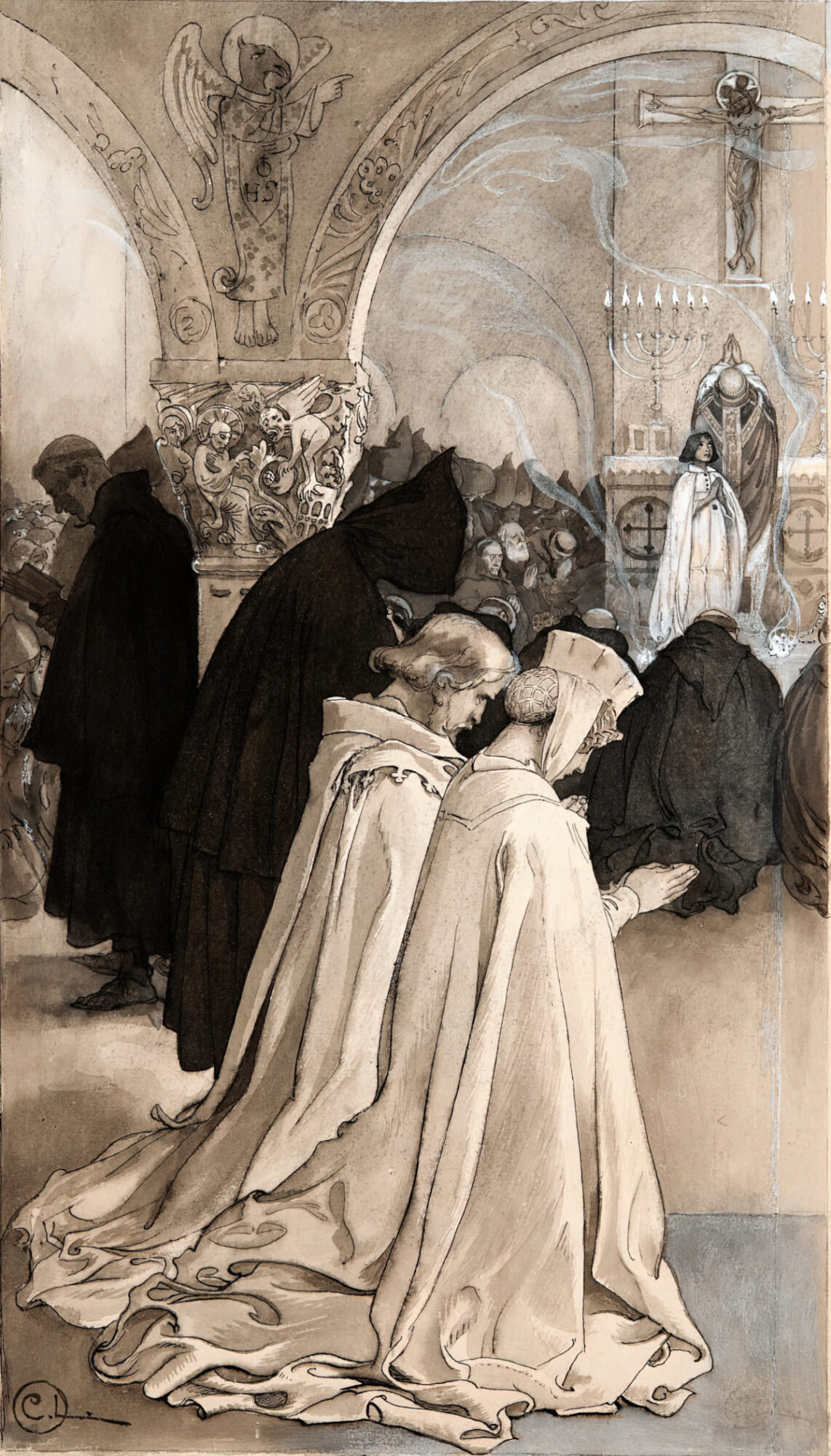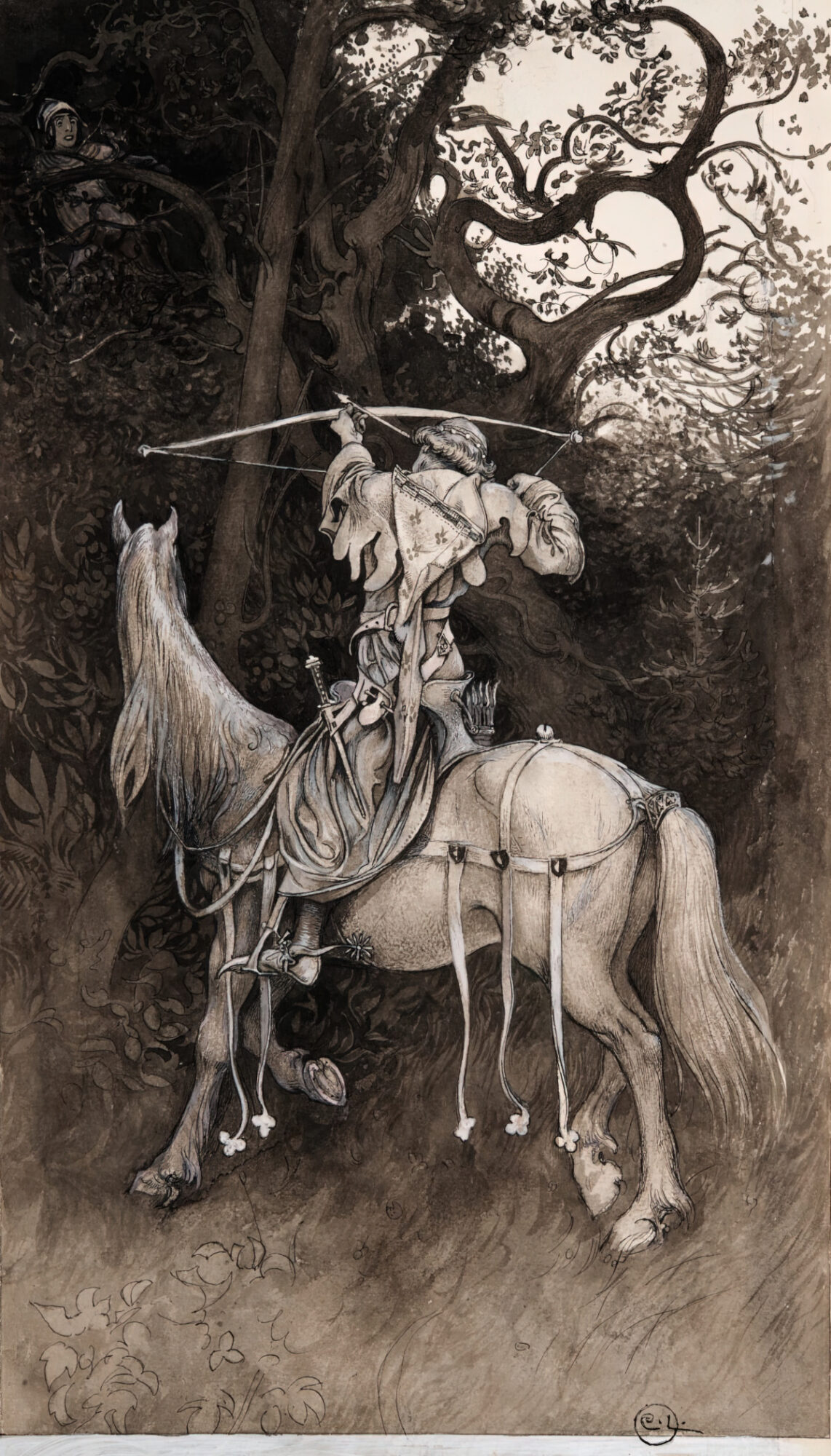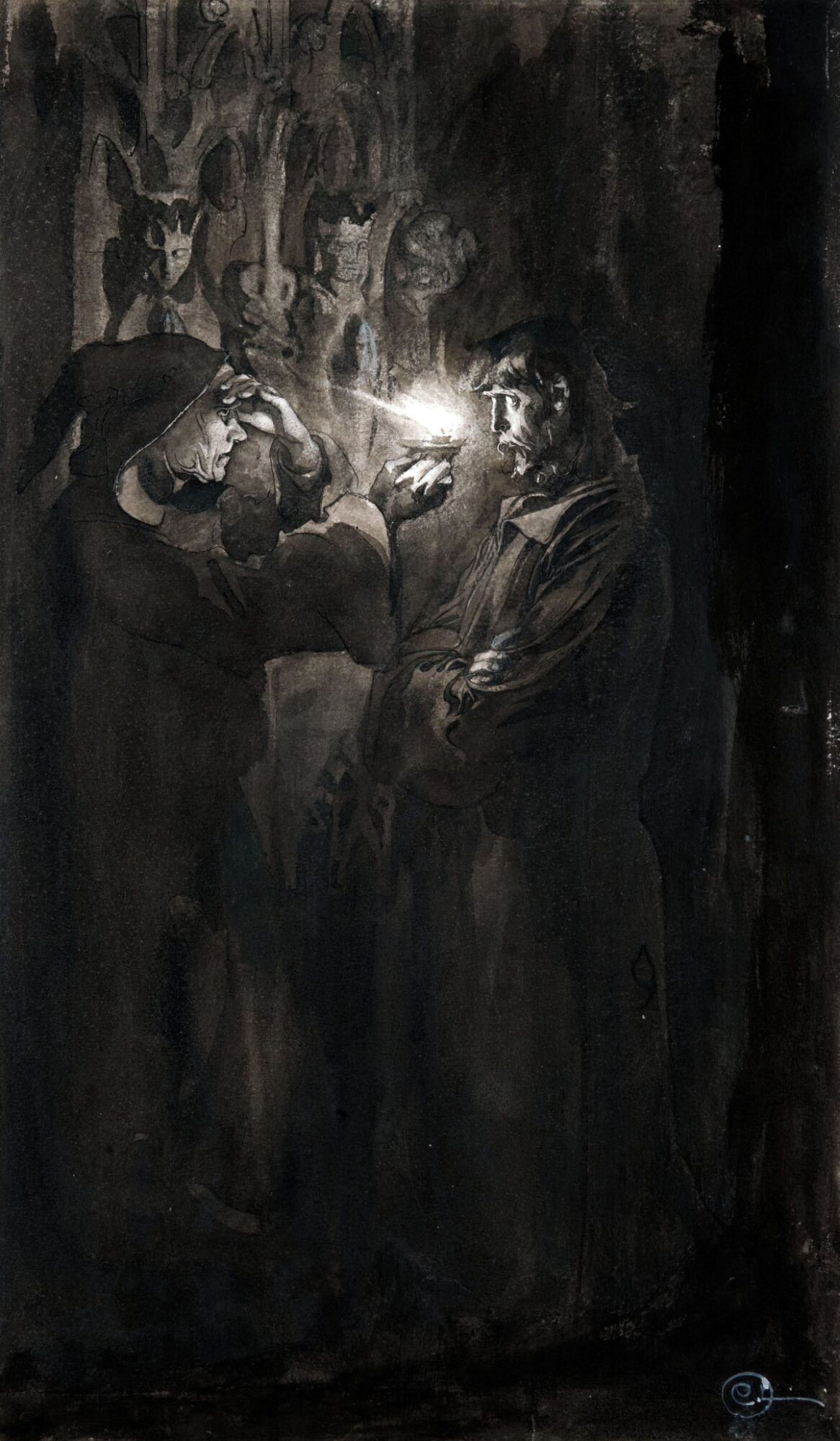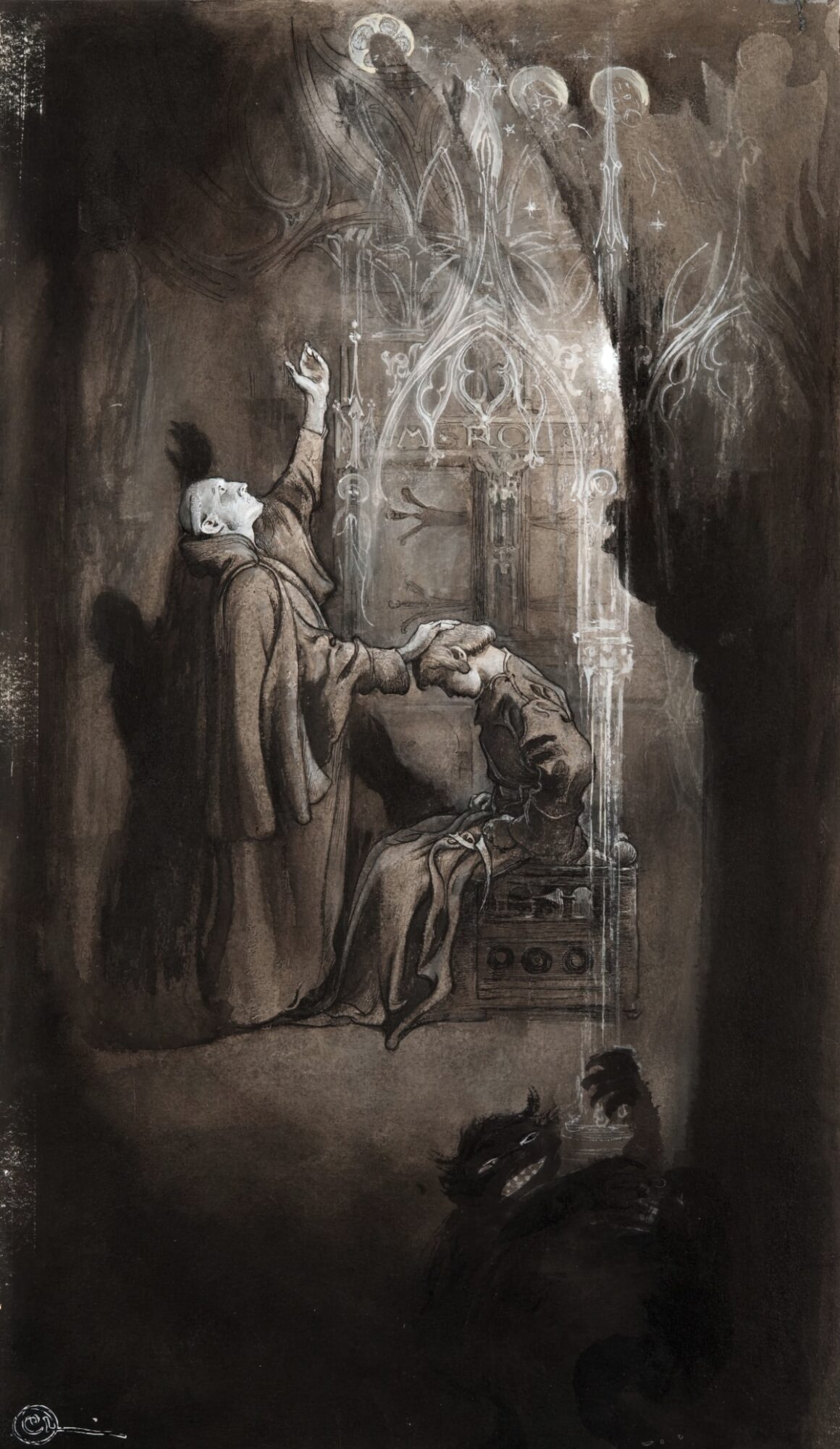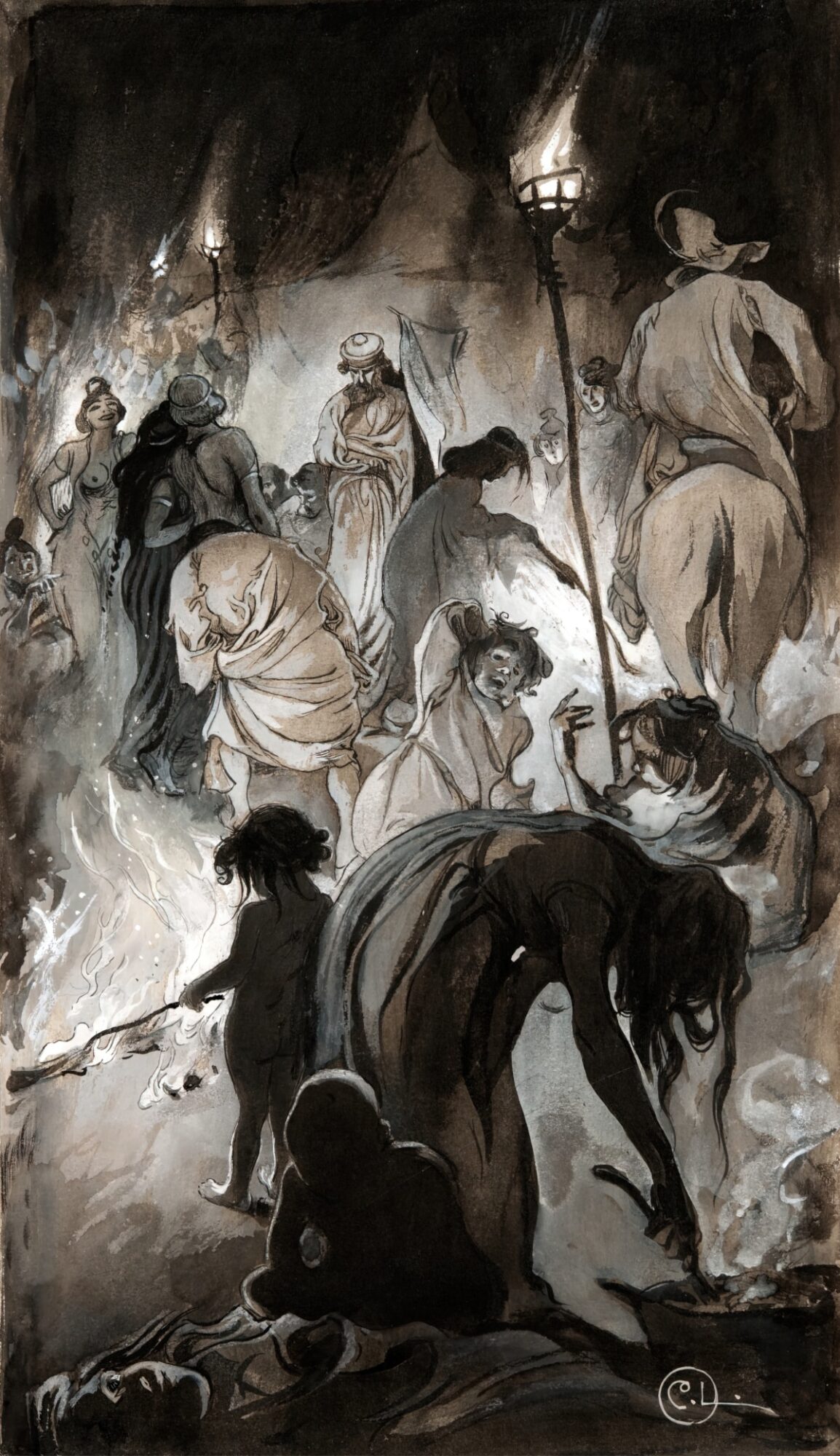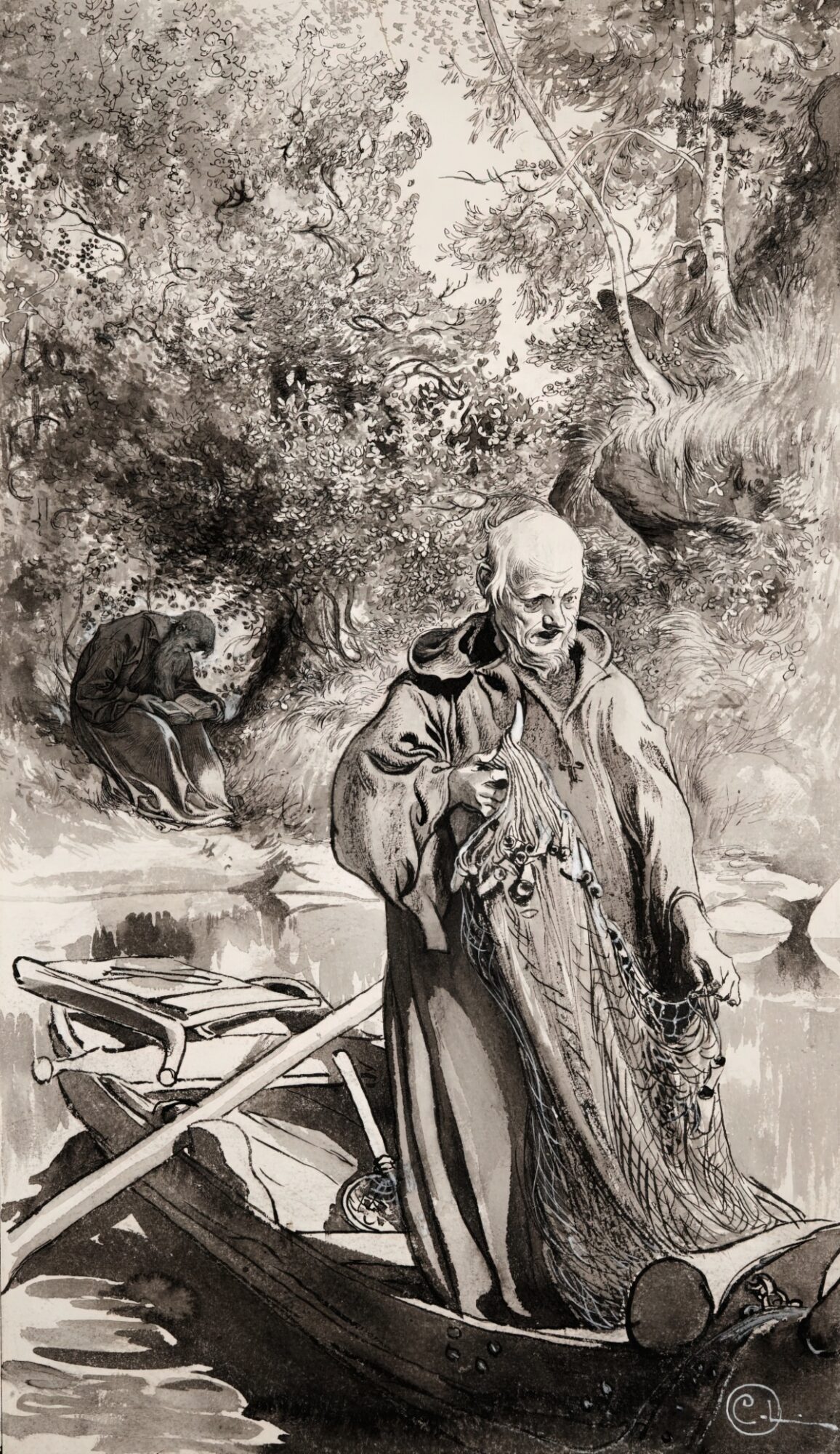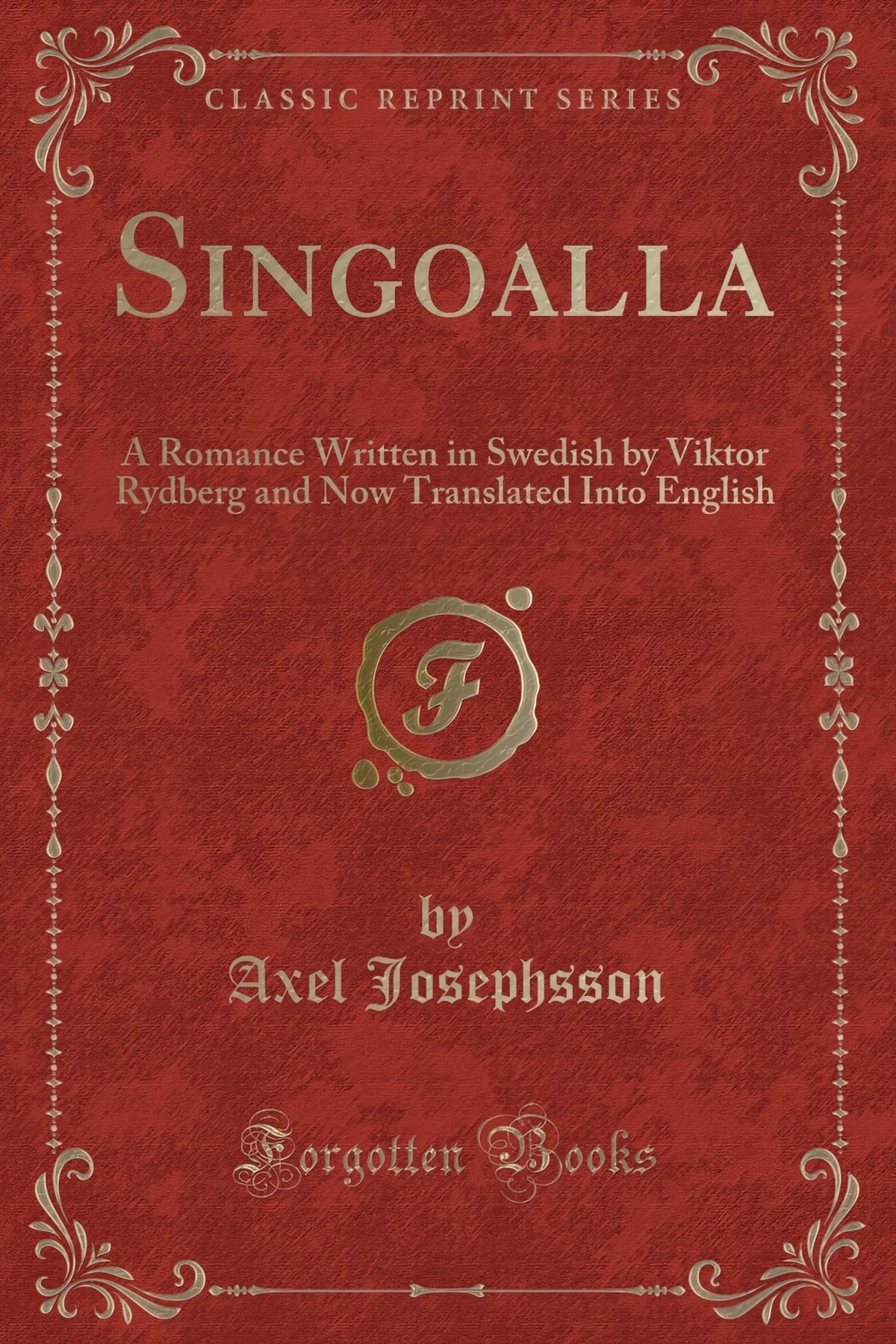I need to show you these beautiful illustrations by Swedish illustrator Carl Larsson, more famous for colourful, domestic scenes.
They are for an illustrated edition of Swedish author Viktor Rydberg’s novel Singoalla (1857), or in English, The Wind Is My Lover: Romantic fairytale poem. In the afterword to the 1896 edition, Karl Warburg calls Singoalla an “eccentric prose poem with a mysterious timbre”.
The novel was adapted for opera, which opened in 1940. There’s also a 1949 film.
These days, Singoalla is also a type of Swedish biscuit.
Because it is out of copyright, the Swedish version as been digitised. If you can read Swedish, it’s here. Even if you can’t read Swedish, you’ll find the rest of Carl Larsson’s beautiful illustrations.
This melodramatic novel doesn’t have a happy ending, but the opera does. The ideology centres on fate and destiny and one true love. Singoalla and Erland are star-crossed lovers, though this is about the only thing the story has in common with Romeo and Juliet. The over-arching message: Trust your heart. Your head will let you down.
The setting is Sweden in the 1300s, and the Småland forests, which are vast and desolate in reality but are given the fairytale treatment in this novel, meaning people run into each other all the time, as if it’s the Hundred Acre Wood out of Winnie The Pooh. In the background we have plague and witchcraft.
Singoalla is a princess. She comes from a Nomadic tribe, translated to ‘gypsy’ in English. Because of 1800s views of travellers, contemporary readers may find this story uncomfortably racist, though Viktor Rydberg was comparatively inclusive for his time.
One fine summer’s day she meets a knight called Erland Månesköld by a brook in the wilderness.
Singoalla has a son with Erland.
However, Singoalla’s tribe take the son hostage. They have hatched a plan to steal valuables from a monastery.
The tribe has access to dark magic. They give Erland a potion. This makes him forget all about Singoalla. He becomes Lord of the castle and because he doesn’t remember she exists, he abandons her.
Ten years later, Erland is married to someone else. However, Singoalla still has a little magical power of her own, and she makes sure Erland has dreams about a child, their child, who also happens to predict the Black Death.
Erland doesn’t trust his heart, thinking that when you follow your heart, you’ve basically succumbed to witchcraft. (Remember, the setting is during the Witch Craze.)
Erland’s son does come back to him, briefly.
However, in the novel, the main characters die.
Carl Larsson’s illustrations have a nightmarish quality which take us right back to an imagined Middle Ages, where supernatural beings inhabit the magical land.
